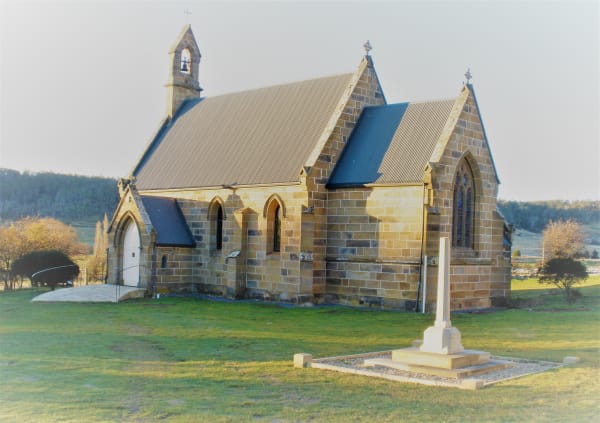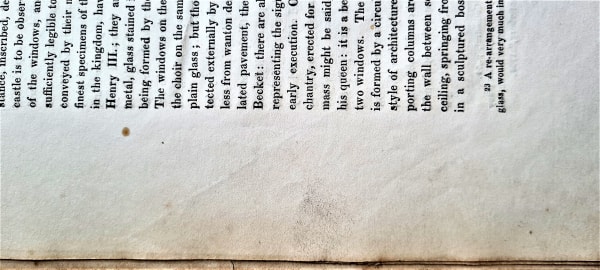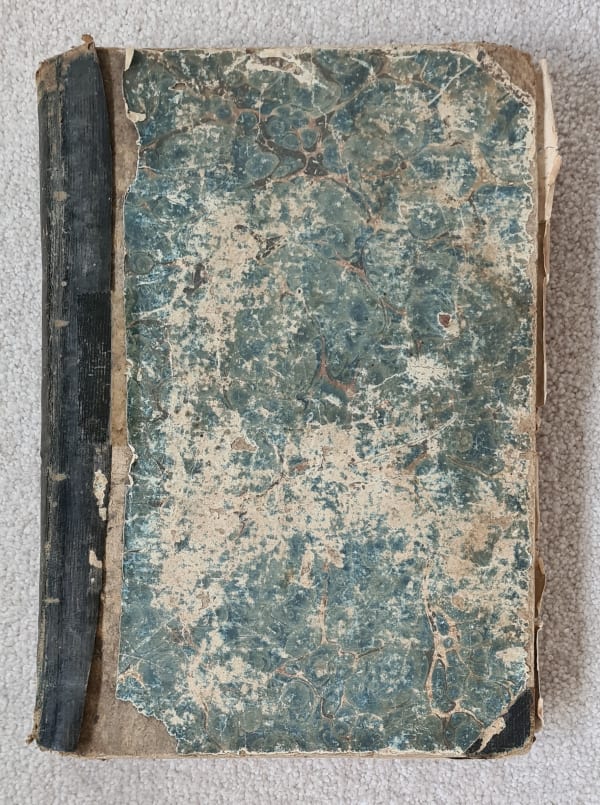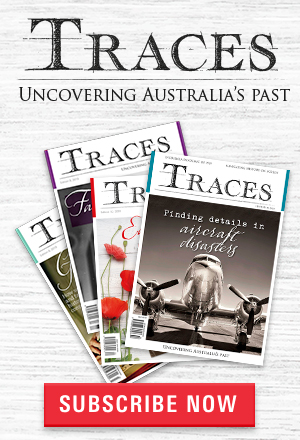With tattered spine and mottled hardback, its age was no secret. Spots of speckled mould lay on many a page between the aged covers, but I bought it anyway. The asking price was, after all, the equivalent of just a few coffees. Not bad for an object created in 1836.
Yet after liberating this book from a store in Oatlands for $15 about ten years ago, I remain mildly irritated at my own purchase. I am still perplexed what to do with it. A damaged copy of Cathedral Churches of England and Wales Vol. II was not what I was looking for in one of Tasmania’s historic towns. Nor is it something I want or need or likely will.
I bought it as the end point of a leg-stretching exercise on an otherwise unmemorable work trip. Pulling into historic Oatlands and walking into an antique shop, I soon found the book section and – as usual – began looking for the old, the interesting, and the inscribed.

There, amid much more expensive if uninspiring species of history, I found this little memento of the gothic revival. It survived from a time when England and its empire became obsessed with antiquarianism, ultimately hitching the future to an imaginary version of the medieval past.
Nonetheless, while the gothic revival now appears more 19th century than medieval, it has blessed Tasmania with an especially rich architectural heritage.
Oatlands itself has proof of this cultural turn not far from the store I visited. The little sandstone church of St Paul, which was opened in 1851, has fair claim to be based on a design made in the 1840s by Augustus Northmore Welby Pugin, the famous English architect. The nearby Anglican church of St Peter is also an early, broadly neo-gothic structure.
But my book is older than either of these structures. This means it was likely the kind of thing which helped bring antiquarianism and the gothic revival to Van Diemen’s Land in the first place. And this is where my dilemma arose.

I recall driving back towards Hobart with this lonely, broken second volume on the back seat. I was thinking of the internal illustrations. While most of the volume was torn and mouldy, some of the internal prints were in reasonable shape and I was wondering if I could extract them. There was and still is a fair market for antique prints, even imperfect ones. And why not? Who doesn’t want a piece of art on their wall that’s nearly two centuries old? And who doesn’t want to make money out of people who want old things on their wall?
Yet the whole volume tells a story, which I cannot quite bring myself to disarticulate. More than a decade on, I still have it, as complete as when I found it.
I keep it because while ostensibly just a crummy edition of an old English book, this tattered volume offers an insight into Tasmania’s cultural history. While my professional self knows that I could easily use digitised copies to address this aspect of Tasmania’s history, my conscience knows that this particular volume says something more. This one is here. This book has known Tasmanian hands and seasons.

So, I’ve picked it up again and am wondering what to make of it. The first section on Amiens is the most badly torn, as indifferently treated as England’s own continental history tends to be. There are smudgy marks on the page edges that suggest someone read at least part of the story of Canterbury Cathedral. One smudge is a half-decent thumbprint, still identifying some long dead reader.
But there is not much else. An ink stain near St Paul’s faces an image of the cathedral of Wells, a small repair holds a border near Winchester’s choir, and a flattened insect reposes on the first page.
But this critter is a most telling sign. Certainly, the volume contains evidence of early usage and whispers of the interest it once held for its originating times. But the insect, like the water stains, the mould, and the crumbling binding, remains one of the clearest Tasmanian contributors to the volume. It speaks less to antiquarianism and architecture, than to long ages of neglect.
Still, entombed in an old book about the past, which once used as a guide to the future, this creature also points to something else. While less famous than the Pugin church around the corner, this bug-ridden book reveals the interconnections of times and ideas. In the pages of Tasmania’s story, it at the very least marks a curious one.

Nick Brodie describes himself as a professional history nerd. He has a doctorate in late medieval vagrancy law, is a leading expert on the history of poor boxes, and is the author of acclaimed popular histories Kin: A Real People's History of Our Nation and 1787: The Lost Chapters of Australia's Beginnings. His latest book is The Vandemonian War: The Secret History of Britain's Tasmanian Invasion, which uses a wealth of new archival material to re-write Australia's most infamous colonial war.












